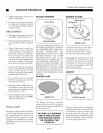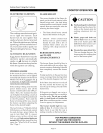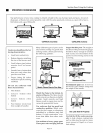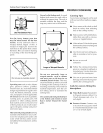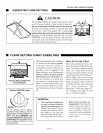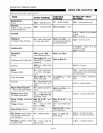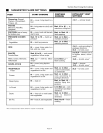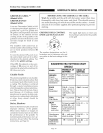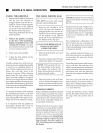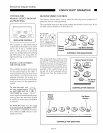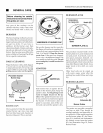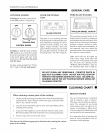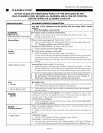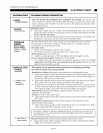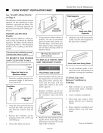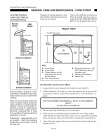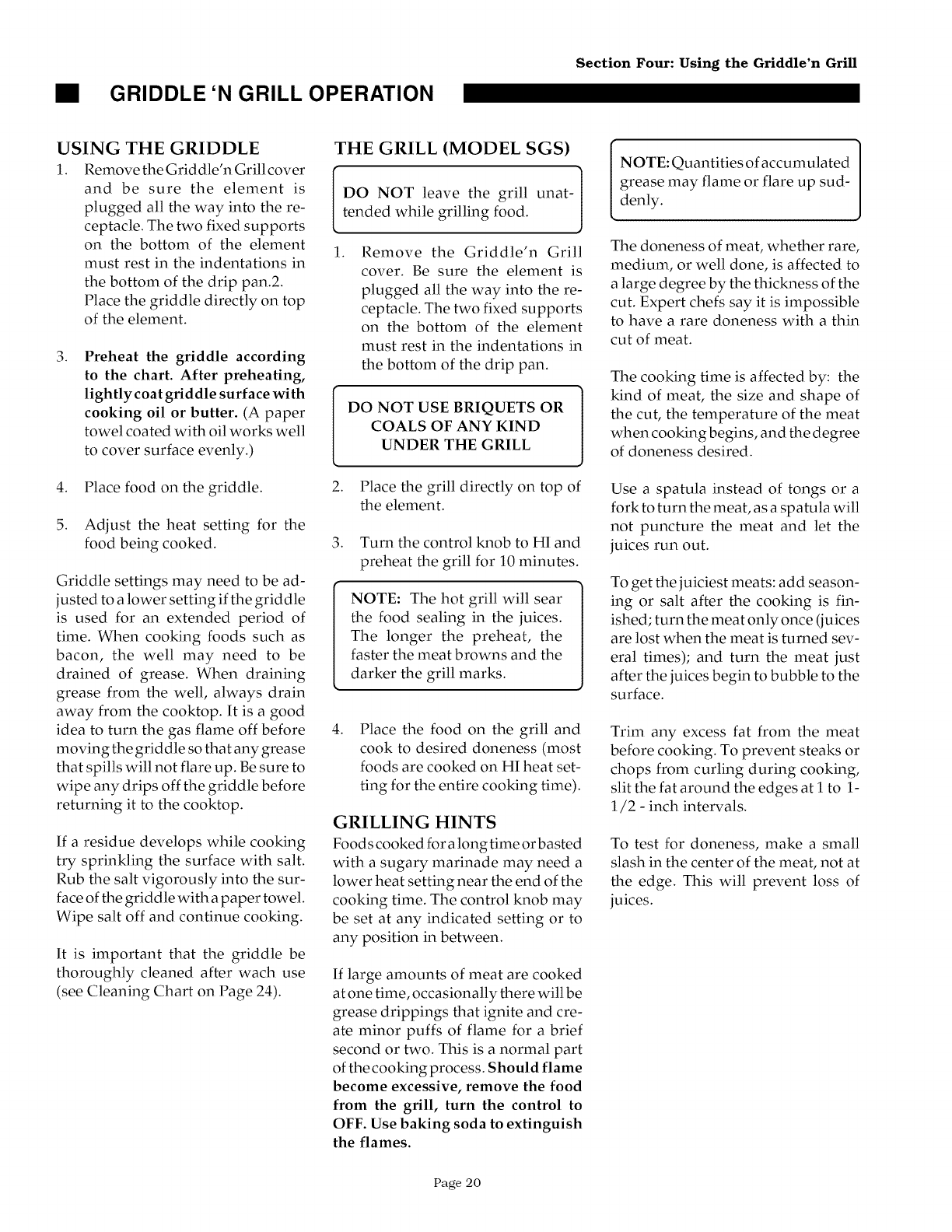
GRIDDLE 'N GRILL OPERATION
Section Four: Using the Griddle'n Grill
USING THE GRIDDLE
1. RemovetheGriddle'n Grillcover
and be sure the element is
plugged all the way into the re-
ceptacle. The two fixed supports
on the bottom of the element
must rest in the indentations in
the bottom of the drip pan.2.
Place the griddle directly on top
of the element.
.
Preheat the griddle according
to the chart. After preheating,
lightly coat griddle surface with
cooking oil or butter. (A paper
towel coated with oil works well
to cover surface evenly.)
4. Place food on the griddle.
5. Adjust the heat setting for the
food being cooked.
Griddle settings may need to be ad-
justed to a lower setting if the grid dle
is used for an extended period of
time. When cooking foods such as
bacon, the well may need to be
drained of grease. When draining
grease from the well, always drain
away from the cooktop. It is a good
idea to turn the gas flame off before
moving the griddle so that any grease
that spills will not flare up. Be sure to
wipe any drips off the griddle before
returning it to the cooktop.
If a residue develops while cooking
try sprinkling the surface with salt.
Rub the salt vigorously into the sur-
face of the griddle with a paper towel.
Wipe salt off and continue cooking.
It is important that the griddle be
thoroughly cleaned after wach use
(see Cleaning Chart on Page 24).
THE GRILL (MODEL SGS)
DO NOT leave the grill unat-tended while grilling food.
1. Remove the Griddle'n Grill
cover. Be sure the element is
plugged all the way into the re-
ceptacle. The two fixed supports
on the bottom of the element
must rest in the indentations in
the bottom of the drip pan.
DO NOT USE BRIQUETS OR
COALS OF ANY KIND
UNDER THE GRILL
.
.
Place the grill directly on top of
the element.
Turn the control knob to HI and
preheat the grill for 10 minutes.
NOTE: The hot grill will sear
the food sealing in the juices.
The longer the preheat, the
faster the meat browns and the
darker the grill marks.
.
Place the food on the grill and
cook to desired aloneness (most
foods are cooked on HI heat set-
ting for the entire cooking time).
GRILLING HINTS
Food s cooked for a long time or basted
with a sugary marinade may need a
lower heat setting near the end of the
cooking time. The control knob may
be set at any indicated setting or to
any position in between.
If large amounts of meat are cooked
at one time, occasionally there will be
grease drippings that ignite and cre-
ate minor puffs of flame for a brief
second or two. This is a normal part
of the cooking process. Should flame
become excessive, remove the food
from the grill, turn the control to
OFF. Use baking soda to extinguish
the flames.
NOTE: Qu anti ties of accu m ul ated
grease may flame or flare up sud-
denly.
The doneness of meat, whether rare,
medium, or well done, is affected to
a large degree by the thickness of the
cut. Expert chefs say it is impossible
to have a rare aloneness with a thin
cut of meat.
The cooking time is affected by: the
kind of meat, the size and shape of
the cut, the temperature of the meat
when cooking begins, an d the degree
of doneness desired.
Use a spatula instead of tongs or a
fork to turn the meat, as a spatula will
not puncture the meat and let the
juices run out.
To get the juiciest meats: add season-
ing or salt after the cooking is fin-
ished; turn the meat only once (juices
are lost when the meat is turned sev-
eral times); and turn the meat just
after the juices begin to bubble to the
surface.
Trim any excess fat from the meat
before cooking. To prevent steaks or
chops from curling during cooking,
slit the fat around the edges at I to 1-
1/2 - inch intervals.
To test for aloneness, make a small
slash in the center of the meat, not at
the edge. This will prevent loss of
juices.
Page 20



